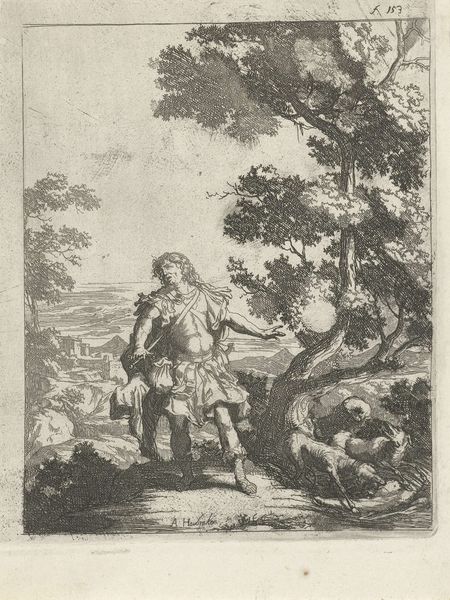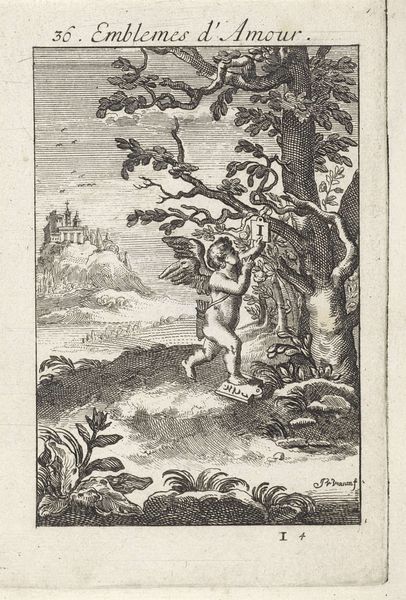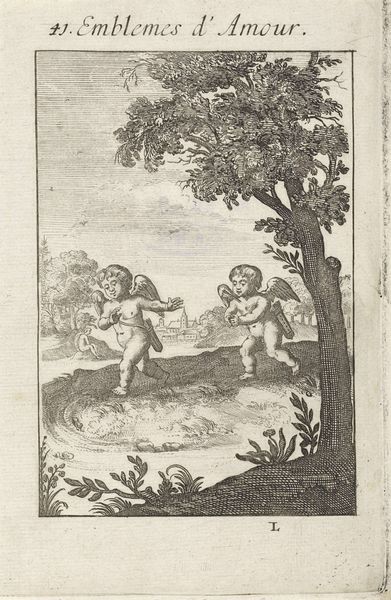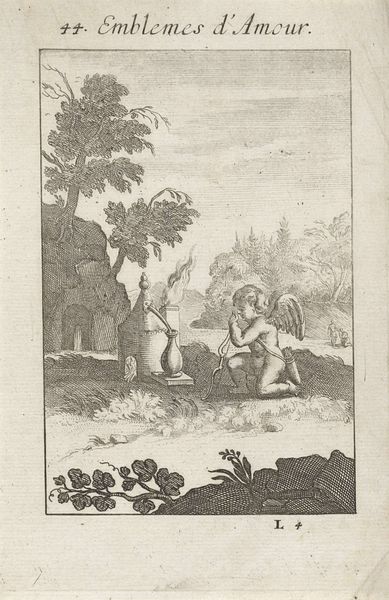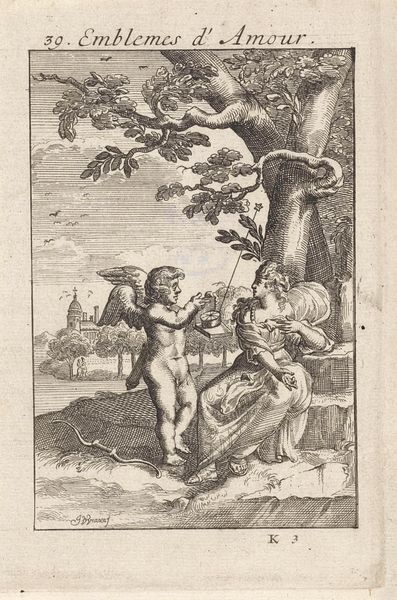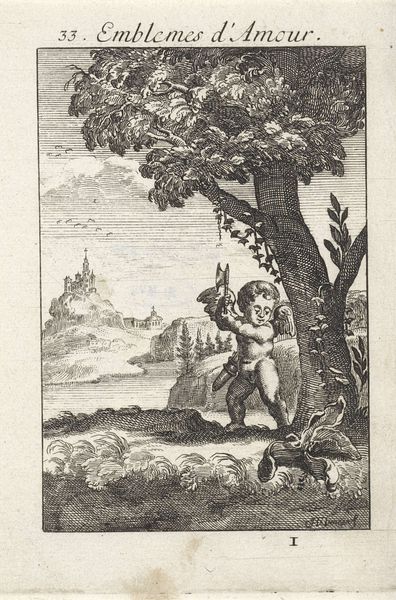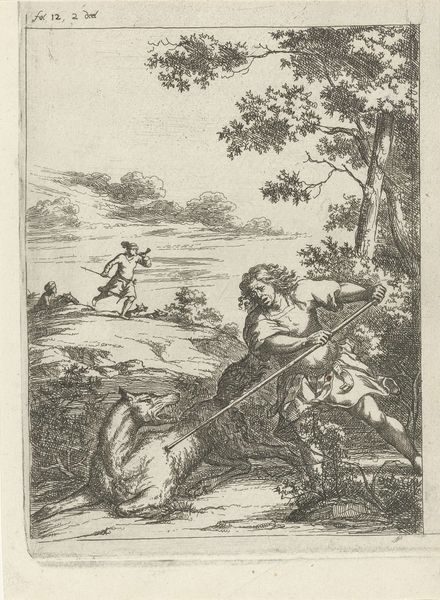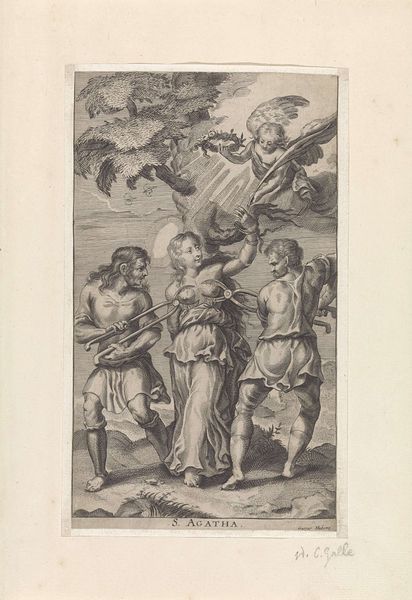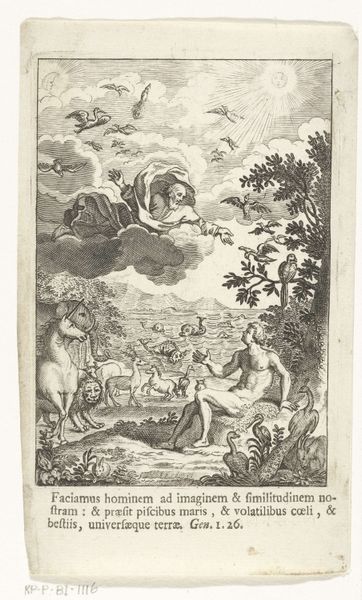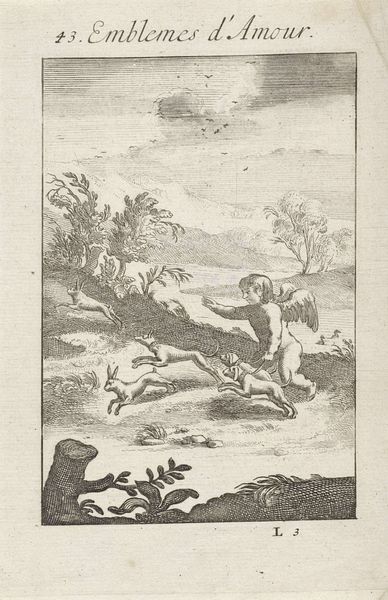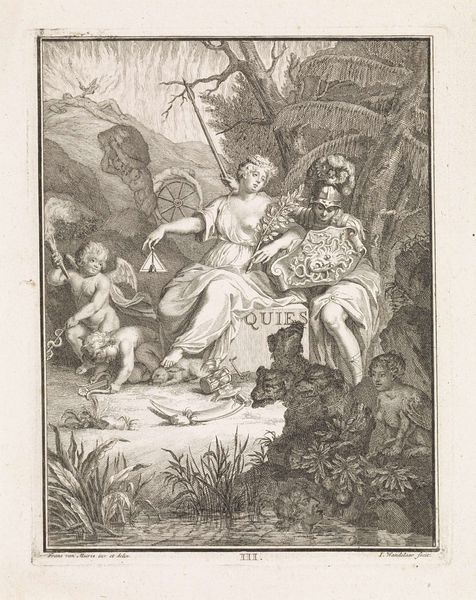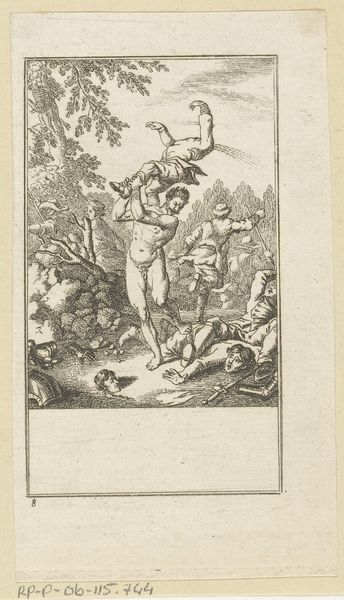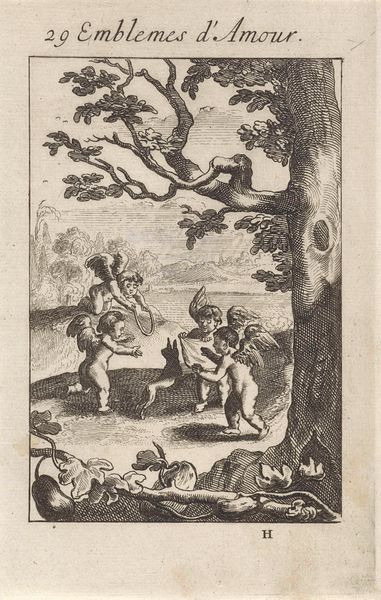
print, engraving
#
allegory
#
baroque
# print
#
old engraving style
#
landscape
#
figuration
#
engraving
Dimensions: height 145 mm, width 95 mm
Copyright: Rijks Museum: Open Domain
Editor: This engraving, "Putti met juwelenkistje" or "Putti with Jewel Box," made in 1686 by Jan van Vianen, features two cherubs inspecting a box. It’s intricate, but what strikes me is how this luxurious item is set in what looks like a carefully constructed landscape. How do you read this print? Curator: Well, let's start with the materiality. It’s an engraving. The labor involved in producing multiple impressions is crucial. This wasn’t a unique object for the elite. The printmaking process democratizes images and the ideas they contain, circulating notions about love, wealth, and, importantly, their relationship to a crafted ideal of nature. Consider also the economic context; who would have bought these prints, and what would these images mean to them? Editor: So you're focusing on the process and the potential audience. Do you think the landscape has symbolic weight, too, beyond being decorative? Curator: Absolutely. The juxtaposition is key. We see emblems of love, yes, but embedded within a landscape that has also been fashioned, sculpted by labor. It's not merely a backdrop. Consider the relationship between the idealized forms of the cherubs, the jewel box as a product, and the stylized, also 'produced' landscape around them. Doesn’t the very act of printing—of mechanical reproduction—challenge any sense of unique artistic genius? Editor: That makes me see the image differently, especially how the print itself is an object made with specific techniques, not just a window into some story. Thanks! Curator: Indeed! Examining the materials and means of production is the most relevant way to think about art and society and cultural expression. The image reflects both art and material history.
Comments
No comments
Be the first to comment and join the conversation on the ultimate creative platform.
